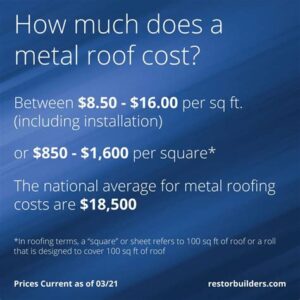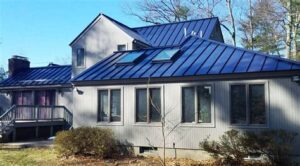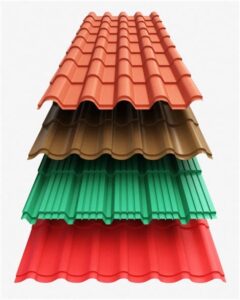When it comes to protecting your home from the harsh effects of storm damage, a properly installed metal roof is crucial. However, many homeowners unknowingly make significant errors during the installation process that can lead to costly repairs and ineffective protection. In this guide, we’ll explore the most common mistakes to avoid when installing a storm damage metal roof. From improper measurements to neglecting the quality of materials, each decision can vastly impact the durability and performance of your roofing system. We’ll also discuss the importance of adhering to local building codes and regulations, as well as why opting for professional installation can save you time, money, and stress in the long run. Ensure your investment stands the test of time by learning how to sidestep these pitfalls.
Understanding The Top Mistakes In Storm Damage Metal Roof Installation
When it comes to storm damage metal roof installation, avoiding top mistakes can mean the difference between a durable roof and repeated issues down the line. Many homeowners may not be aware of common errors that can undermine their investment. Below are some critical areas where mistakes often occur:
- Improper Flashing Installation: Flashing plays a vital role in directing water away from roof seams and joints. Poorly installed flashing can lead to significant leak issues, especially during heavy storms.
- Inadequate Fastening: Using the wrong type or insufficient number of fasteners can cause panels to loosen or detach in high winds. Secure fastening is essential for the structural integrity of the roof.
- Wrong Panel Orientation: Each metal roofing panel must be installed in the correct orientation to ensure maximum water runoff and minimal risk of ponding. Incorrect installation can lead to premature wear and damage.
- Overlooking Insulation Needs: Installing a metal roof without considering required insulation can lead to condensation issues, which may result in rust or mold growth underneath the panels.
- Lack of Proper Ventilation: A well-ventilated roof helps prevent heat buildup and prolongs the life of the roofing material. Inadequate ventilation may cause materials to degrade faster than expected.
By identifying and addressing these top mistakes, homeowners can ensure a more effective installation process that protects their property and investment for the long term.
How Improper Measurements Lead To Costly Mistakes
One of the most critical aspects of storm damage metal roof installation is getting the measurements right. Improper measurements can lead to an array of issues that not only impact the functionality of your roof but also cause significant financial burdens. Here are some common mistakes associated with inaccurate measurements:
- Misjudging Roof Area: If the area of the roof is calculated incorrectly, it can result in purchasing insufficient or excessive materials. This mistake can delay the project and inflate costs unnecessarily.
- Incorrect Overlap Calculations: Metal roofing requires specific overlap amounts to ensure water runoff and prevent leaks. Failing to account for this can lead to improper sealing and potential water damage.
- Disregarding Roof Pitch: Measuring the roof pitch inaccurately can affect the installation process. A mistaken pitch leads to inadequate material selection and hinders proper water drainage.
To illustrate the impact of these measurement errors, consider the following table:
| Measurement Error | Potential Consequences |
|---|---|
| Misjudging Roof Area | Extra costs for additional materials and installation delays |
| Incorrect Overlap Calculations | Increased risk of leaks and water damage |
| Disregarding Roof Pitch | Poor drainage leading to potential structural damage |
By paying close attention to measurements and ensuring accuracy before installation, homeowners can avoid these top mistakes and enjoy a durable and properly functioning metal roof after storm damage repair.
Neglecting Quality Materials: A Common Pitfall
Choosing the right materials for your storm damage metal roof installation is crucial. Many homeowners make the top mistakes of selecting low-quality or unsuitable materials, often to save on initial costs. However, this can lead to significant long-term expenses due to repairs or replacements.
Metal roofing is renowned for its durability and longevity, but not all metal is created equal. Here are some key aspects to consider when selecting materials:
| Material Type | Pros | Cons |
|---|---|---|
| Steel | Strong, affordable, and resistant to moisture | Can rust if not properly coated |
| Aluminum | Lightweight and highly resistant to corrosion | More expensive and can be softer, leading to dents |
| Copper | Extremely durable and aesthetically pleasing | Very costly and may require special handling |
| Zinc | Long lifespan and self-healing properties | Limited availability and can be very expensive |
Investing in high-quality materials not only enhances the aesthetic appeal of your property but also provides better protection against the elements, particularly in storm-prone areas. It is advisable to consult with professionals who can guide you in selecting the best materials tailored to your specific environment and needs.
Neglecting the choice of quality materials can be one of the top mistakes made during storm damage metal roof installation, potentially jeopardizing the safety and integrity of your home.
Ignoring Local Building Codes And Regulations
One of the most significant top mistakes homeowners can make during storm damage metal roof installation is ignoring local building codes and regulations. Local codes are established to ensure safety, durability, and adherence to community standards, and failing to comply with these can result in costly repercussions.
Here are some reasons why adhering to local building codes is essential:
- Safety: Building codes are designed to protect inhabitants and ensure that structures can withstand environmental stressors. Failing to meet these standards can lead to unsafe conditions.
- Insurance Issues: Most insurance policies require the installation to comply with local codes. Non-compliance can lead to denied claims when damage occurs.
- Resale Value: Properties that do not meet building codes can face reduced market value or difficulties during resale as potential buyers may be wary of legal complications.
- Fines and Penalties: Local authorities may impose fines or request that unpermitted work be redone, leading to additional expenses.
It’s essential to familiarize yourself with local regulations before beginning any roofing project. This might include permits, material specifications, and installation guidelines that are unique to your area. Consulting with local experts or contractors who understand the specific requirements can help ensure compliance and save homeowners from falling into one of the most common top mistakes in metal roof installation.
The Importance Of Professional Installation To Avoid Errors
One of the significant factors that contribute to successful storm damage metal roof installation is ensuring the job is performed by trained professionals. The top mistakes often occur when DIY enthusiasts or inexperienced individuals attempt to undertake complex roofing tasks without proper knowledge or skills. Professional installers bring expertise that can significantly minimize errors, which could lead to costly repairs down the line.
A qualified roofing contractor understands the intricacies involved in metal roofing projects, including the selection of appropriate materials, installation techniques, and compliance with local building codes. This knowledge allows them to anticipate potential issues and implement solutions before they become major problems.
Moreover, professional installation typically comes with warranties that can protect homeowners in case of defects or installation failures. These warranties provide peace of mind, knowing that if something goes wrong due to improper installation, there is recourse without the added expense of corrective measures.
Using a professional service can save you time and effort. Homeowners may underestimate the labor and coordination needed for a successful storm damage metal roof installation. Professionals streamline the process, ensuring that the project adheres to a timeline and budget, thus reducing stress and unexpected setbacks.
Frequently Asked Questions
What are some common mistakes made during storm damage metal roof installation?
Some common mistakes include improper material selection, insufficient preparation of the roof deck, inadequate sealing of joints, neglecting local building codes, and failing to account for proper drainage.
Why is proper material selection important for metal roof installation?
Choosing the right material is crucial because it affects durability, weather resistance, and overall performance of the roof, especially in storm-prone areas.
How can homeowners ensure their roof deck is properly prepared ?
Homeowners should ensure the roof deck is clean, dry, and free of any debris or old roofing materials, and make necessary repairs to the deck before installation.
What role do local building codes play in metal roof installation?
Local building codes set minimum requirements for safety and performance; ignoring them can lead to legal issues and can compromise the integrity of the roof.
How can inadequate sealing of joints affect a metal roof?
Inadequate sealing of joints can lead to water leaks, causing damage to both the roof and the structure beneath it, ultimately resulting in costly repairs.
What are some tips to ensure proper drainage for a metal roof?
To ensure proper drainage, it’s important to install the roof with the appropriate pitch, use the right materials for gutters and downspouts, and regularly maintain them to avoid blockages.
What professional advice can homeowners seek before installation?
Homeowners should consult with licensed roofing contractors who specialize in metal roofs to get assessments, recommendations, and guidance on best practices for installation.





